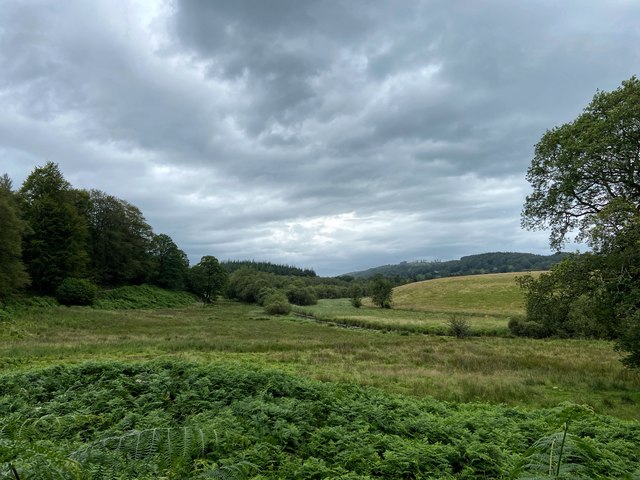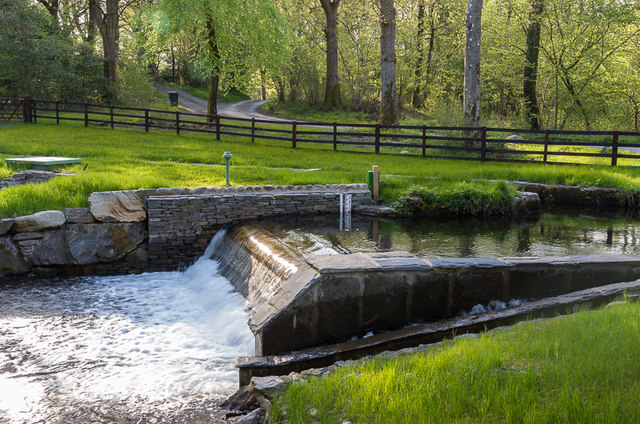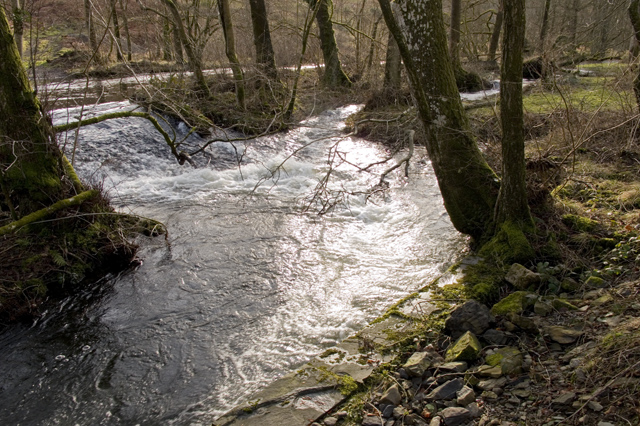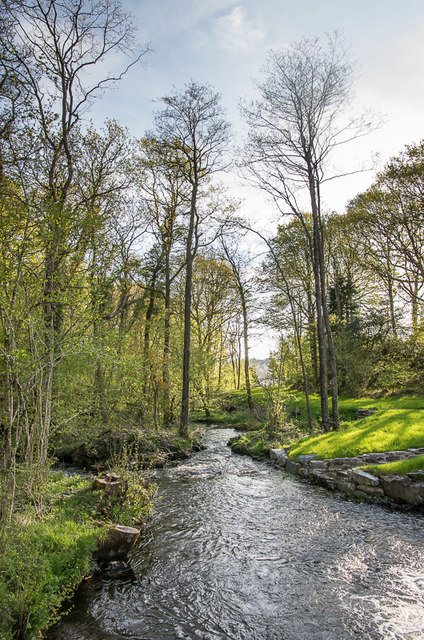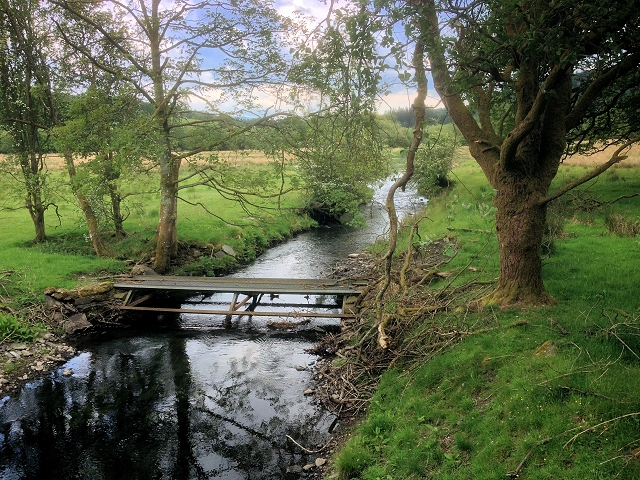Topics > Northumberland > Civil Parishes in Northumberland > West Bedlington Civil Parish > Bedlingtonshire, 1855
Bedlingtonshire, 1855
Extract from: History, Topography, and Directory of Northumberland...Whellan, William, & Co, 1855.
BEDLINGTONSHIRE
BEDLINGTONSRIRE is situated at the north-east corner of Castle Ward, and is bounded on the north by the river Wansbeck, on the west by the parishes of Morpeth and Stannington, on the south by the river Blyth, and on the east by the German Ocean. It comprises the townships of Bedlington, Camboise, Choppington, Netherton, Sleekburn (East), and Sleekburn (West), whose united area is 9,011 acres. The population in 1801, was 1,422; in 1811, 1,488; in 1821, 1,862; in 1831, 2,120; in 1841, 3,155; and in 1851, 5,101 souls. The hundred of Bedlingtonshire and the parish of the same name are co-extensive.
We possess no authentic information regarding the proprietorship of this parish, anterior to the commencement of the tenth century, when we find that it was purchased by Cutheard, the second Bishop of Chester-le-Street, who added it to the possessions of the see. Subsequent to the removal of the bishopric to Durham, it still continued to form an integral part of the palatinate, possessing its own courts and officers of justice who were appointed under the bishop's commission, until the reign of Henry VIII., when the Crown resumed this privilege, and ordained that in all matters of law and civil jurisdiction, Bedlingtonshire was to be considered a member of the county of Durham. This ordinance remained in force till October, 1844, when, in pursuance of the Acts 7 and 8 Vict., c. 61, it became a portion of the county of Northumberland.
The ancient records inform us that lands in this parish were formerly held of the Bishops of Durham, by the families of Elliott and Hertford, by fealty, and the payment of a small rent, though the great majority of the inhabitants held theirs by servile tenures. During the civil wars, the possessions of the see of Durham having been sold by order of the Parliament, this manor was purchased by Robert Fenwick, Esq., who, on the restoration of the regal power, was obliged to restore it to its original proprietor. For parliamentary purposes Bedlingtonshire is included in the borough of Morpeth.
BEDLINGTON is a township and considerable village in the parish of the same name, the property of W. W. Burdon, Esq., George Marshall, Esq., and others. The area of the township is returned with that of the parish, and its rateable value is £7,031 15s. The Bishop of Durham is lord of the manor. Here are several stone quarries, three collieries, and the Bedlington Iron Works, which rank among the oldest and most extensive in the north of England. They afford employment to a great number of persons, who are engaged in the manufacture of chain cables, bolts, bar and sheet iron, and other articles. The Glebe Colliery is worked by Longridge and Co., and the Bedlington Colliery by Davidson and Co. These two establishments employ respectively 200 and 400 persons.
THE VILLAGE of Bedlington is pleasantly situated on the summit and slope of an eminence, about four and a half miles S.S.E. from Morpeth, and consists principally of one long and irregular street, forming a kind of sloping avenue from the river Blyth, which is navigable for small craft to the Bedlington Iron Works, about a mile east of the village. THE CHURCH, dedicated to St. Cuthbert, whose remains rested here for one night, in 1069, is a small Gothic structure, enlarged and repaired in 1818, at which time the workmen employed in these repairs and alterations discovered, on the north side of the Church, three grave stones, ornamented with crosses and swords in the style of the eleventh or twelfth centuries, and one of them had the request '' Ora pro nobis" upon it. In pulling down the north wall, there was also brought to light a fragment of a pillar, fourteen inches long, on which the remains of an inscription to the following effect were plainly discernible "CRVX, or LVX VNDIQUE FVLGET AMATA.'' In addition to the above, there were found the remains of a man, supposed to be those of Cuthbert Watson, a well known somnambulist, who was killed upon the spot where they were discovered. He had risen in his sleep, February 11th, 1669, and was in the act of climbing the north buttress of the tower, apparently with great ease and firmness, when a person, who was passing by at the time, dreading the danger of the poor man's situation, spoke to him, and he awoke, fell, and was instantly killed. This story is supported by the traditions of the place, by an entry said to be in the parish register, and by the above date, and the words "Watson's Wake," cut upon the buttress. The register of this parish comences in 1654. The living, a vicarage in the archdeaconry of Northumberland and deanery of Newcastle, is valued in the Liber Regis at £13 6s. 8d. ; gross income £455. The patronage is vested in the Dean and Chapter of Durham. Rev. Edward C. Ogle, vicar; Rev. Robert Taylor, Curate. The Baptists, Presbyterians, Primitive and Wesleyan Methodists, have commodious places of worship in the village.
THE MECHANICS’ INSTITUTION, which comprises a news-room, and a good library, was established about five or six years ago by a few young men of the village, aided by the Earl of Carlisle, the Bishop of Durham, the Rev. E. C. Ogle, vicar, Captain Howard, and A. R. Fenwick, Esq, J.P.; James Gibson, and John B. Gibb, secretaries; Robert Young, librarian.
THE COURT HOUSE, situated near the centre of the village, is a substantial and suitable building, containing a lockup, consisting of two apartments. Robert Drummond, superintendent constable for Bedlingtonshire district, is court keeper. Petty Sessions are held here once a month: the Rev. E. C. Ogle; M. J. F. Sidney, Esq., of Cowpen Hall; Sir M. W Ridley, Bart., Blagdon ; A. R. Fenwick, Esq.; and W. W. Burdon, Esq., are the presiding magistrates.
The village stands much in need of a more copious supply of water, the limpid element being only obtainable from a few pumps and wells, which often become dry during the summer months. Sanitary improvements, and the introduction of gas are much to be desired. The ruins of an old hall are visible on the south side of the village.
POST OFFICE, BEDLINGTON. John Urwin, postmaster, Letters arrive here, from Morpeth, at 10-1O a.m., and are despatched thereto at 2-35 p.m. Money Orders are issued and paid here.
Directory:
|
Atkinson Rev. Nathaniel, incumbent of Horton Aynsley Jacob, saddler Carr John, agent Charlton Thomas, joiner and cartwright Charlton Edward, nailmaker Darling William, builder, Sheepwash, Guide Post Davison and Partners, Bedlington Colliery Drummond Robert, superintendent constable for Bedlingtonshire, and court keeper Elsdon James, grocer and draper French William, brewer and malster, and London porter merchant Gibson Ann, chain and nail manufacturer, and ironmonger Landless John, painter Longridge James, Esq. Maclaren Benjamin, L.R.C.S. Edinburgh |
Marshall George, Esq. Murray George, surgeon Ogle Rev. Edward C. vicar, Vicarage Oliver Richard, builder Singleton Thomas, builder Smith Mr. Henry Spencer Mr. James, ironmaster, Bedlington Iron Works Soulsby Richard, registrar of births, deaths, and marriages, relieving officer, etc. Taylor Rev. Robert, curate Thompson William, constable, & surveyor of highways UNITED KINGDOM TEMPERANCE & GENERAL PROVIDENT lNSTITUTION, James Gibson, agent Urwin John, chemist, druggist, & postmaster Waldie Thomas, clock and watchmaker |
|
Academies & Schools Duncan George Fisher William Gibb John Turnbull John
Blacksmiths Gibson Ann, & nail manufacturer Oliver Ralph Soulsby Robert Henry, and agricultural implement maker Watson John Wilson William
Boot and shoemakers Foggin William Lee Thomas Rutter Thomas Singleton Henry Soulsby Thomas Stoker Edward Swan William Thompson Nichol Wilson Henry Young William, & librarian
Butchers Cole Thomas Dobson Joseph Dowson John Foggin John Orange Joseph Swan Robert, and farmer
Farmers Aynsley Joseph, Howlett Hall Bell George, Broadway House Clark William, Wind Mill Curry John, Bedlington-lane House Emery Alex. Glebe Farm |
Lamb William, Red House Lamb Luke Swan Robert, and butcher Wilson Fenwick, Hirst Head
Grocers & Provision Dealers - Marked * are also Drapers Bell Jane, draper only Brown Mrs. Briggs Samuel * Davison John Dawson James, Bedlington Iron Works Ditchburn Jane A. * Dickinson William * Dobson Joseph Dobson Robert Elsdon James Gledston Mary Gibson Ann, and nail and chain manufacturer James John Johnson Ann Kyle Mary Swan Mary Thornton Edward, and miller Wilks James * Taylor John, and merchant tailor, Bedlington Colliery *
Inns and Taverns Black Bllll, Mary Dunn Blue Bell, Mary Gray Bridge Inn, John Ridley Dun Cow, Jacob Smith Grapes, Edward Moore Howard Arms Inn, John Carr Petrie Masons Arms, Richard Oliver Red Lion, William Charlton Sun, John Watson Turk's Head, Thomas Mallaburn |
Beerhouses Brown Thomas Dryden Jane Graham Christopher, Bedlington Colliery Green William Kinghorn George Lee Thomas Simm Frances Soulsby John Telfer William Walkinshaw Thomas
Joiners Charlton Thomas Langlands Henry, & cabinet maker Maughan Joseph Younger Joseph
Milliners and Dressmakers Forster Hannah McKay John Soulsby Isabella Patterson – Philips Catherine
Stonemasons Dees William Gordon Robert Oliver Richard, and builder
Tailors Gray Thomas Guthrie Nicholas Hudson George Smith John Shepherd Thomas Soulsby John Taylor John, and draper and grocer, Bedlington Colliery |
Conveyances
BLYTH & TYNE RAILWAY, from the Station at Bedlington Colliery, for the conveyance of passengers and merchandise. John Skurr, station master.
An Omnibus leaves the Howard Arms Inn, daily, to meet the trains on the York, Newcastle, and Berwick Railway, at Netherton Station.
CARRIERS. - To Newcastle, George Fenwick, Thomas Kenny, and John Swan, on Tuesdays and Saturdays. To Morpeth, Edward Stokoe, on Wednesdays and Saturdays.
CAMBOISE is a township and hamlet. containing 868 acres, the property of Sir Matthew White Ridley, Bart., of Blagdon. The population is returned with the parish. The rateable value is £789 10s., and the soil is principally a strong clay, yielding good crops of wheat, THE HAMLET of Camboise is situated on the coast at the mouth of the Wansbeck, four miles north-east from the village of Bedlington. It is occasionally visited by small vessels with cargoes of draining tiles, and other articles for agricultural purposes; the return cargoes of these vessels are principally col}fined to stone from the Ashington quarry. The village of NORTH BLYTH is also situated in this township, on a small peninsula, at the mouth of the river Blyth. This township was formerly held by a family that assumed the local name, from whom it passed to the Cambhouses, Ellynghams, and the Earl of Westmoreland, coming ultimately into the possession of the present proprietor. In the immediate vicinity of this township, there are two ledges of rocks, called respectively the Camboise ridge, and the Rowcars; the former situated about half a mile to the east of the mouth of the Wansbeck, are left dry at low water; the latter are also left dry at low water, though there are five fathoms of water close beside them.
On the 15th September, 1809, Mr. J. Storey of Camboise, who had been out fishing at sea for his amusement, returned in the evening, and immediately proceeded home to announce his arrival to his family, when his two daughters, one aged fourteen, the other aged twenty-two years, proposed to accompany him to the shore, in order to assist in securing the boat. The eldest daughter and father proceeded towards the boat, while the younger staid at a distance with the light, which suddenly disappearing. the other sister went to ascertain the cause, when, melancholy to relate, the wretched father never beheld them again alive. It is supposed that they got on a quicksand at the edge of the river and sank. Their bodies were found on the following day. The unhappy father overcome with grief for the loss of his daughters, put an end to his existence on the 25th of the following October, by throwing himself into the river with a large stone tied about his waist. He left a widow and six children.
DIRECTORY. W. R. Crawford, farmer and shipowner ; Eleanor Rutherford, Saracen's Head Inn; Mr. Short, innkeeper, North Blyth; Richard Wheatley, Brown Bear Inn, High Pans.
CHOPPINGTON is a small township, the property of M. W. Dunn, Esq., J. H. L. Gable, Esq., and others. It is distant four miles east by south from Morpeth, and its rateable value is £1,234 10s.
Directory:
|
Darling William, builder, Sheepwash Guide Post Fenwick Thomas, gardener, Bothal Haugh Gray John, joiner and cartwright, Sheepwash Guide Post Hall Arthur, grocer, Sheepwash Guide Post Hogarth Jno. grocer, &c. Sheepwash Guide Post Lowes George, blacksmith, Sheepwash Guide Post Overton Thomas, brickmaker, Sheepwash Guide Post Pringle Jane, beerhouse, Sheepwash Guide Post Richardson William, shoemaker, Sheepwash Guide Post Rutherford Thomas and Robert, saw mills and corn millers, Sheepwash Guide Post |
Rutherford -, beerbouse, Sheepwash Guide Post Rutter Edward, beerhouse, Guide Post Thornton Thomas, market gardener Watson John, Anvil Inn, Guide Post
Farmers Dunn William and Joseph, Cleasewell Hill Lowes Robert, North Choppington Lowes Thomas, South Choppington Lowes William, East Choppington |
NETHERTON, OR NEDIRTON, is a township and small village, the property of the Earl of Carlisle, and its rateable value is £2,680 15s. The population is included in the parish returns. Here is a colliery, which is worked by the creditors of John C. Birkinshaw, and affords employment to about 400 persons. THE VILLAGE of Netherton is situated four miles south by east of Morpeth, and possesses a fine school, erected and endowed, in 1846, by the Earl of Carlisle. It is in the Elizabethan style of architecture, and contains two good school-rooms, besides a residence for the teacher.
POST OFFICE, NETHERTON, John Stewart, postmaster. Letters arrive from Morpeth, at 10 a.m., and are despatched thereto at 3 p.m.
Directory:
|
Brown John, agent, Hartford Bridge Fenwick R. A. Esq. J. P . Netherton Hall Lishman William, agent, Netherton Colliery Kill John, grocer, etc. New Row Riddle John, vict. Morpeth Arms Inn Smith Joseph, under viewer, Netherton Colliery Stewart John, grocer, blacksmith, and postmaster |
Swan - vict. Anglers' Inn, Hartford Bridge Turnbull John, schoolmaster Farmers Graham Thomas Hall Thomas and James, Blue House Robson John, Netherton Moor Sadler J. Netherton South Farm |
SLEEKBURN (EAST) is a township and hamlet, the principal proprietors of which are Lord Barrington, and Sir M. W. Ridley, Bart. Its rateable value is £680. THE HAMLET of East Sleekburn is situated two and a half miles north-east of Blyth, and the principal residents are William Dobson, beerhouse keeper ; John and George Watson; and the farmers are Mark Coxon; George Grey, Sleekburn Grange: and John Gray, Mount Pleasant.
SLEEKBURN (WEST) is a township and hamlet, intersected by the rivulet from which it derives its name. The principal proprietors are Lord Barrington, and Lord Ravensworth. There is a plantation in this township, containing about 140 acres. Rateable value, £2,313 15s. The HAMLET of West Sleekburn, is situated six miles east by south from Morpeth.
DIRECTORY. John Dowson, woodman; Edward Ord, innkeeper; Thomas Patterson, blacksmith; William Watson, yeoman; and the farmers are John Clarke, Jane Marshall, John Nicholson, and John Young, Whinney Hill.
Notes: Bedlintonshire was effectively an enclave of County Durham until the Counties (Detached Parts) Act 1844. When this act of Parliament came into effect on 20th October 1844, Bedlingtonshire, Islandshire, Norhamshire became part of Northumberland.
A somnambulist is someone who sleep walks (see the story of Cuthbert Watson, above.)




